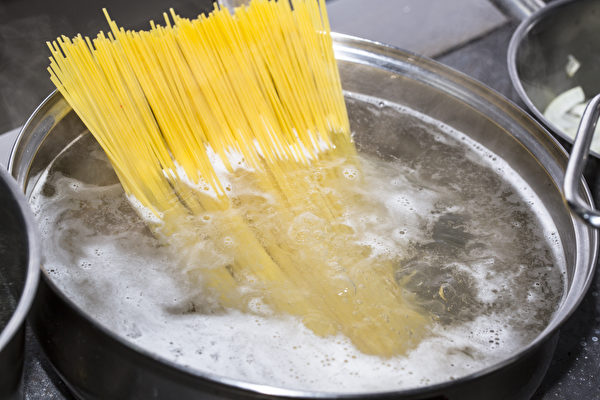Italian pasta (also known as pasta) is one of the world’s recognized delicacies. Apart from the importance of ingredients and production process, the way it is cooked is also a science. In order to explore how to cook the perfect Italian pasta, scientists have used advanced instruments to study its internal structure and physical principles, eventually finding the best cooking methods.
Lund University’s senior lecturer in physical chemistry, Andrea Scotti, wrote on The Conversation website that cooking perfect Italian pasta at home is not an easy task. Many people have experienced the embarrassment of overcooking pasta – especially gluten-free pasta.
Scotti stated that he and his colleagues conducted a study to reveal the physical principles behind the cooking of pasta, thus answering the question of how to cook pasta perfectly.
They used the UK’s National Synchrotron Accelerator (a type of circular particle accelerator) to study the X-ray scattering on pasta to understand its internal structure. Next, they went to a neutron laboratory in the UK and the Laue-Langevin Institute in France to use neutrons to study the microstructure of regular and gluten-free pasta under different cooking conditions.
This study revealed the hidden structural changes of pasta during the cooking process and why gluten-free pasta exhibits such different characteristics.
By studying the starch and gluten structures in pasta on a microscopic scale ranging from tens to thousands of times the atomic radius, they could compare the structural changes in regular and gluten-free pasta under different cooking conditions (such as overcooking or lack of salt).
By mixing regular water and “heavy water” (water containing deuterium isotopes), they made starch or gluten invisible to neutron beams. This allowed them to effectively separate each structure sequentially and understand the roles of starch and gluten in the cooking process.
Scotti explained that their research showed that in regular pasta, gluten acts as a sturdy scaffold that firmly holds starch granules even during boiling, giving the pasta its firm texture and slow digestion rate.
In gluten-free pasta, starch granules are more prone to swelling and collapsing – explaining why this type of pasta becomes mushy under non-optimal cooking conditions and breaks down faster.
They also studied the effect of adding salt to water on the pasta structure. The research found that salt not only enhances the texture of pasta but also significantly affects their microstructure. When regular pasta is boiled in salted water, gluten can maintain its structure, and the damage to starch granules during cooking is relatively minimal.
So, how much salt should be added to maintain the pasta’s microstructure? Their study indicated that the optimal amount is adding 7 grams per liter of water. The more pasta you have, the more water you’ll need. The optimal cooking times for regular pasta and gluten-free pasta are 10 minutes and 11 minutes, respectively.
In contrast, when the salt concentration is doubled, the internal structural damage of pasta accelerates, and the structure of starch granules changes significantly during the cooking process.
Due to the lack of gluten protection, gluten-free pasta behaves differently. Even a small amount of salt cannot compensate for the absence of gluten. Processed starch compounds used to replace gluten in gluten-free pasta rapidly degrade. In extreme cases, when gluten-free pasta is overcooked, for example, cooked for 13 minutes instead of 11 minutes, and with water containing too much salt.
Therefore, the study suggests that the structure of gluten-free pasta is more fragile and less able to withstand prolonged cooking times and improper salt levels.
Scotti concluded that understanding the microstructure of pasta which is invisible to the naked eye would help design better gluten-free foods, aiming to create a gluten-free alternative. This alternative is less likely to deform under unfavorable cooking conditions and has a texture closer to regular pasta.
When it comes to pasta, people may be curious about its history. The National Pasta Association in the United States points out on its website that pasta’s history is as rich as its shapes.
Although records show pasta was widely consumed in the 14th century, it is believed to have existed in some form in ancient China and Greece. Additionally, evidence of pasta appears in Italian recipes from the early 13th century.
Through years of development, pasta now comes in various shapes and sizes, with those made from wheat and gluten-free varieties being the latest trends on the market. Almost every food section in supermarkets offers some form of pasta – whether fresh, canned, dried, frozen, or instant.

